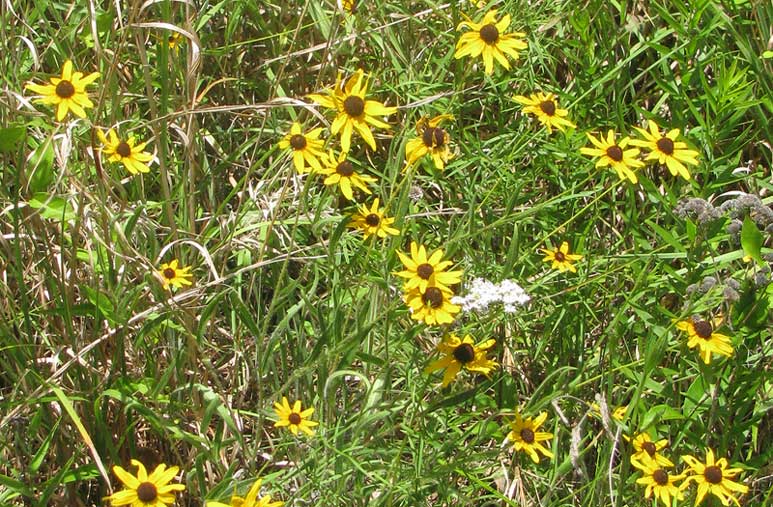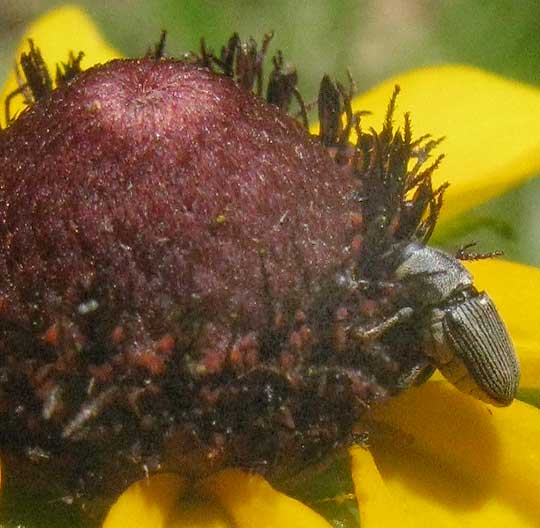Excerpts from Jim Conrad's
Naturalist Newsletter

from the the June 3, 2012 Newsletter issued from the woods of the Loess Hill Region a few miles east of Natchez, Mississippi, USA
BLACK-EYED SUSANS
This week one of North America's most beloved wildflowers has been putting on a show along some isolated roadsides here, sometimes thousands of them where they're not obsessively mowed down. That's a small cluster of them above.
They're Black-eyed Susans, RUDBECKIA HIRTA, members of the Sunflower or Composite Family, so the yellow "petals" are actually flattened ray flowers, and the flower-head's dark, raised center -- the "black eye" -- is composed of many dark purple, cylindrical "disk flowers." A close-up of the dark center is shown below:

In that picture, above the beetle, notice the slender, fuzzy items rising skyward. Those are stigmas, their fuzziness helping them to collect pollen. Several species of Rudbeckia occur in North America, and the online Flora of North America recognizes four varieties of our Rudbeckia hirta. Our variety, angustifolia, bears narrower leaves than the others and is limited to the Gulf Coastal Plain. Rudbeckia hirta can be distinguished from other Rudbeckia species by its stems and leaves being invested with long, stiff hairs, as shown below:

Indigenous Americans traditionally made infusions of Black-eyed Susans for bathing sores and snakebites. Also parts were used to treat dropsy, earaches, diarrhea, worms, headache, fever and heart problems. Yellow dyes were made from the yellow ray flowers.
When I was a kid on the Kentucky farm, millions of Black-eyed Susans along the gravel road in front of our house and along other roads and in pastures imparted to the countryside an early summer beauty that still fills me with nostalgia when I remember what it was like. But the species suffers from mowing and herbicide use, and now those same roads grow just grass and short-lived weeds, while obsessive county and state mowing and herbicide use continues at great cost. If anyone ever asks me which government agencies I'd cut funds to, without a blink I'd suggest reining in those doing mowing and spraying.